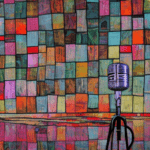One-line summary:
Ways of Seeing by John Berger is a thought-provoking exploration of how our perception of art and images is shaped by cultural and historical contexts, challenging traditional notions of beauty and encouraging a critical examination of visual culture.
Seeing beyond the Surface
In “Ways of Seeing,” John Berger delves into the complex relationship between art, society, and our perception of images. He argues that our understanding of art has been shaped by a set of assumptions and conventions that have been passed down through history. Berger challenges these conventions, urging us to question the way we see and interpret images.
Berger begins by examining the historical context in which art has been created and consumed. He highlights how the advent of oil painting in the 15th century transformed the way we perceive images. With the rise of oil painting, art became a commodity, owned by the wealthy and powerful. This shift in ownership led to a change in the way art was created and viewed, with artists catering to the tastes and desires of their patrons.
Through a series of essays and images, Berger explores the ways in which art has been used to reinforce power structures and perpetuate inequality. He argues that traditional Western art has often depicted women as objects of desire, reinforcing the male gaze and perpetuating the subjugation of women. Berger challenges us to question these representations and to consider the ways in which they shape our understanding of gender and power dynamics.
Decoding the Language of Images
Berger also delves into the language of images, arguing that our perception of art is heavily influenced by the context in which it is presented. He highlights how the reproduction and mass distribution of images have altered our relationship with art, making it more accessible but also diluting its original meaning.
Berger introduces the concept of the “gaze” and how it shapes our understanding of art. He argues that the act of looking is not a passive experience but rather an active process influenced by our cultural and social conditioning. By examining the ways in which images are constructed and presented, Berger encourages us to question the underlying messages and ideologies embedded within them.
A Call for Active Engagement
In “Ways of Seeing,” Berger challenges us to become active participants in the process of seeing and interpreting images. He argues that our understanding of art is not fixed but rather constantly evolving, shaped by our individual experiences and perspectives. By encouraging us to question the conventions and assumptions that underpin our perception of art, Berger invites us to engage critically with visual culture.
Key takeaways from “Ways of Seeing”:
- Art is not a neutral entity but is shaped by the social, cultural, and historical context in which it is created and consumed.
- Our perception of art is influenced by a set of assumptions and conventions that have been passed down through history.
- The language of images can be decoded and interrogated to reveal underlying messages and ideologies.
- Art has the power to challenge and subvert traditional power structures and societal norms.
- Our understanding of art is not fixed but is constantly evolving, shaped by our individual experiences and perspectives.
“The relation between what we see and what we know is never settled. Each evening we see the sun set. We know that the earth is turning away from it. Yet the knowledge, the explanation, never quite fits the sight.”
– John Berger
In “Ways of Seeing,” John Berger invites us to question the assumptions and conventions that shape our perception of art and images. By challenging traditional notions of beauty and encouraging a critical examination of visual culture, Berger prompts us to become active participants in the process of seeing. Through his thought-provoking exploration, he reminds us that art has the power to challenge and transform our understanding of the world around us.












